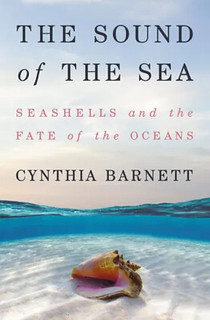
PREV ARTICLE
NEXT ARTICLE
FULL ISSUE
PREV FULL ISSUE
V25 2022 INDEX E-SYLUM ARCHIVE MONETARIA MONETA - THE MONEY COWRIEA review of a new book on seashells delves into their use as money. -Editor
How did we get here? It turns out we came on the back of a small marine gastropod mollusk, in the lap of a fierce Maldivian queen. Known as the money cowry, Monetaria moneta is the world's least impressive cowry — so plain it was entirely omitted from the most lavish illustrated encyclopedia of seashells — and its first global currency. Its remarkable story, laced with all the imaginative strengths and moral follies that make us human, comes alive in The Sound of the Sea (public library) — Cynthia Barnett's wondrous evolutionary-cultural history of seashells. In the fourteenth century, a queen known as Rehendi Khadijah ruled the islands of the Maldives with epic command. One of the earliest women leaders of an Islamic nation, she derived power from both the sultanate and Islam, even as she declined to cover her head — not to mention other parts. She led the kingdom for a third of the century despite two attempts, both by husbands, to depose her. Neither man survived the effort. All the more remarkable was the Maldivian queen's role in the dawn of international trade. The chain of atolls, coral reefs, and lowlying islands 600 miles off the tip of India was the center of production for the first global money. The Maldivian tender packed up perfectly and made for excellent ship ballast. It was neither paper nor metal, though it jingled in the pocket and shined up bright as a fresh-minted coin. The first global specie was a species. Ships arrived from all over the world, riding the southwestern summer monsoons, and filled their hulls with the Sultana's currency, the production of which she oversaw herself. Cowry-filled ships then sailed back to their respective corners of the globe on the eastern winter monsoons. But more than perfect ballast, the Maldivian cowries made for perfect currency: The Money Cowrie — named by Linnaeus Cypraea moneta, now classified as Monetaria moneta — makes a glistening shell in the shape of a small shield, with the cowries' characteristic domed top and flat underside cleaved by a serrated slit. Vaguely toothy, the little ivories range in color from off-white to yellowish. They are enameled, pearly, solid, satisfyingly weighty. Irresistible to pick up and worry, or clack together like dice or coins. The small, durable shells made for ideal currency: Easy to transport and to recognize. Impossible to forge. Perfect for counting — one by one, or by bag or ballast-full. Uniform in shape and size, they yielded a precise value when weighed. The notion of imbuing a strange ocean shell with value had begun much earlier, with the twin forces of human vanity: superstition and personal aesthetics. As early as the Stone Age, cowries were used as jewelry, amulets, and healing objects. Strings of them — both real shells and gold-cast replicas — were found in Egyptian tombs, believed to bring fertility, protect against the Evil Eye, and bring good fortune in the afterlife. So accustomed to seeing immaterial worth in these material objects, these vacant homes of tiny lives, people then readily harnessed their practical conveniences — small, light, portable, easy to see, hard to fake — for the perfect fusion of myth and merchandize. (Money, it bears remembering, has always been and will always remain a consensual reality — a handshake of beliefs with no inherent value and no direct equivalence to objects in the material world.) I've never studied primitive (also known as ethnographic) currencies. Cowries are usually mentioned in every treatment of the topic, but I don't recall this story or cowries being used worldwide. The article says that "By the nineteenth century, money cowries had grown so popular in West Africa that they were used to purchase a third of the human being[s] enslaved and abducted to the Americas." Can anyone confirm this? One thing the article certainly has right in the above note is that money is a "consensual reality", a topic addressed in the following article. -Editor
To read the complete article, see:
THE BOOK BAZARREWayne Homren, Editor The Numismatic Bibliomania Society is a non-profit organization promoting numismatic literature. See our web site at coinbooks.org. To submit items for publication in The E-Sylum, write to the Editor at this address: whomren@gmail.com To subscribe go to: https://my.binhost.com/lists/listinfo/esylum All Rights Reserved. NBS Home Page Contact the NBS webmaster 
|
